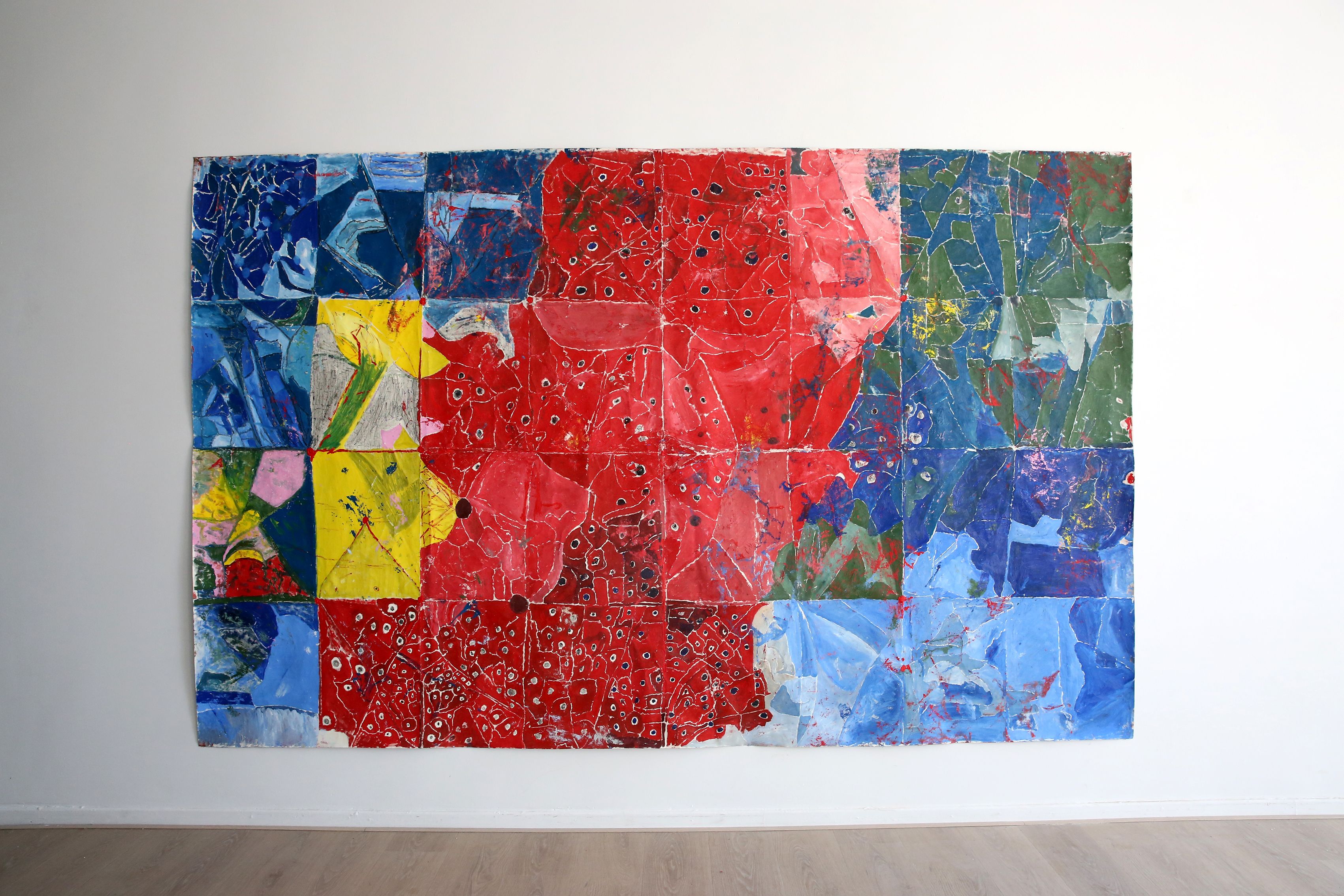02 july 2023, Yves Joris
Hadassa Ngamba’s duende
The first time I came across the term Duende, the almost untranslatable Spanish word, was while reading Play and Theory of the Duende, the famous lecture by Spanish poet Federico García Lorca. He describes Duende as a form of Dionysian inspiration that every artist struggles with. That inspiration, or let's just call it a goosebumps moment, is also the core idea behind Duende Art Projects in Antwerp South, where the exhibition 'Alliances' by the Congolese artist Hadassa Ngamba is currently on display.
Since 2021, Bruno Claessens, former European director of the Department of African art at Christie's and a passionate expert in the same field for over 15 years, has focused his gallery on a single goal: putting African art on the map in unique locations. With the 'Alliances' exhibition by Hadassa Ngamba, he once again puts his money where his mouth is.
The (colonial) past as inspiration
Hadassa Ngamba's (°1993) work explores the boundaries of various artistic disciplines: from performance and installation art to drawings and from painting to photography. Her difficult childhood in industrial Kizu (Central Congo) is often the starting point of her art, in which she searches for collective answers to her country's (colonial) past and in which she makes short work with prevailing prejudices and even confronts them with a wink in return. A prime example of this is Likabo Diplomacy (2023). This small work, which is offered to visitors free of charge, an iron bar wrapped in aluminium foil. Likabo is the Lingala word for gift and playfully reverses the colonial roles where in the past the local population was fobbed off with tin foil.
For decades, raw materials have been one of the (bloody) reasons for exploiting natural resources, a capitalist pursuit of wealth that goes hand in hand with exploitation and oppression. Colonial cartography is a key element in Ngamba’s oeuvre. In this way she charts that exploitation while telling her story to the general public.
An overview of old and new work
'Alliances' presents both older and new work, the basis being formed by Cerveau 1. This work was created in 2017 in her studio in Lubumbashi and shows us an imaginary map of her country. A canvas is divided into areas of different sizes and coloured with ground malachite, perfectly depicting the fragmentation of her land. On the other side of this work is a bigger brother from the same series. Cerveau 4 measures 217 by 346 cm and is more colourful than the previous works, but the traditional surfaces are present again. Small dots are present in the work. Bruno explains that this is her artistic way of bringing human presence into the work. Between the two works is Banza-mambu. The title of this traditional chair, which was created for the occasion from weathering steel, can best be translated as 'thinking about problems'. A nice title if you realize that this chair was conceived in such a way that your sitting position forces you to look at the sky and not at the immediate surroundings that take place on a lower dimension.

Hinged photographs and enlarged SIM cards
Nketu-Tunga (‘Power Woman’)a photo series from 2018, shows five large black and white photos of a performance in Lubumbashi. Dressed in a 66 cm long braid, the artist entered into a dialogue with the local population. The curiosity of the public attracted such a large crowd that the police feared a disturbance of public order. Of course everything went smoothly. What is striking is the method of attachment to the wall. No system at the back of the work, meaning no loss to its dynamic character. The works are attached to the side via hinges so that they can be displayed at any time at a different angle.
In addition to this series, there is recent work entitled Trajet Ngamba & Investment. For these works in watercolour and malachite, Ngamba found inspiration in old SIM cards. On the one hand they refer to communication that makes it possible to continue feeding the collective memory, while, on the other hand, they to refer to the exploitation of the population in the relentless race for raw materials that these forms of communication make possible.
The 'Alliances' exhibition (which will be extended over the summer) not only shows the beautiful and powerful work of a young Congolese artist, but Bruno Claessens also proves that he keeps his word and introduces us to art that increasingly appears on our radar. A tip when visiting this exhibition: be sure to ask the gallerist questions, because the information and knowledge he is happy to share is just as beautiful as the works. You won't get a nicer definition of duende.


